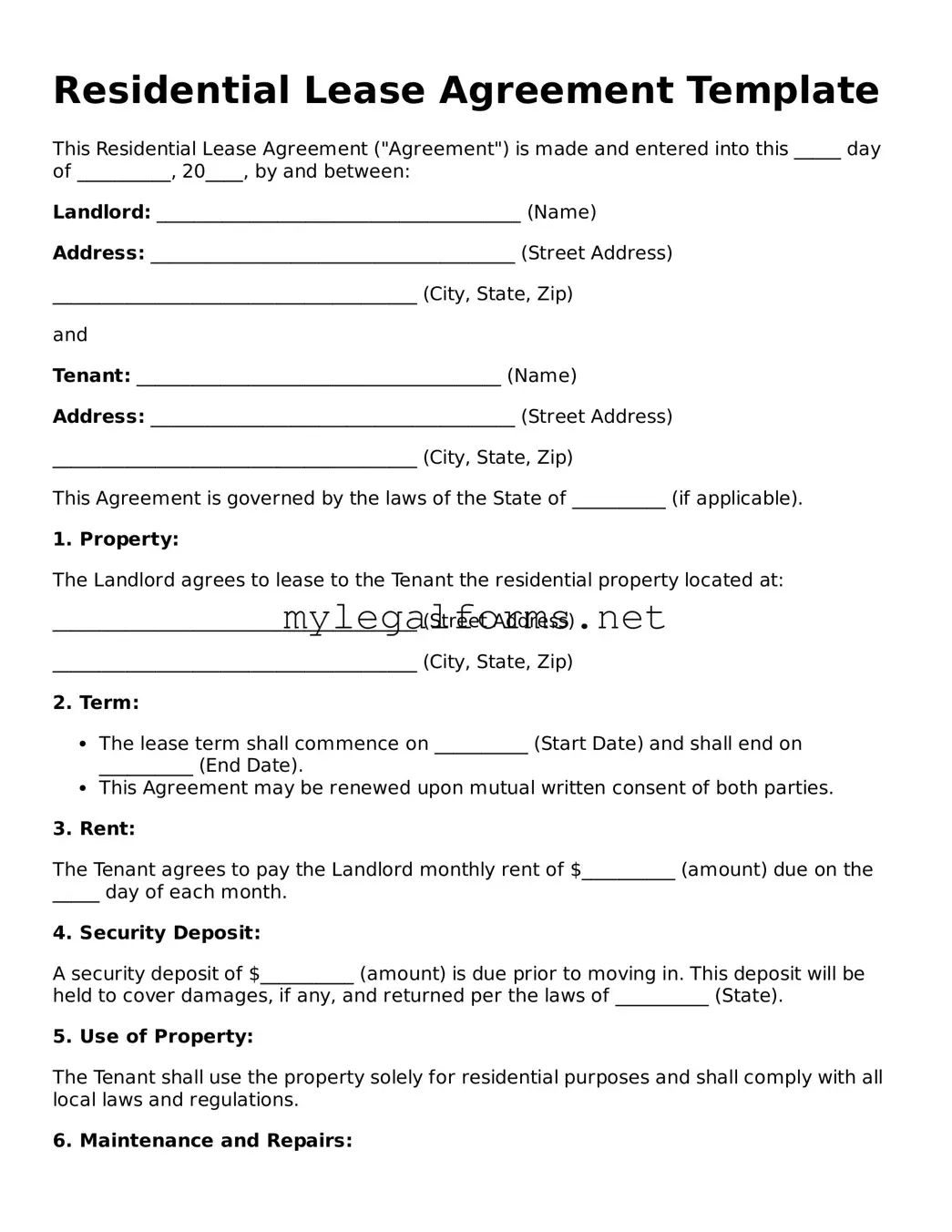Residential Lease Agreement Template
This Residential Lease Agreement ("Agreement") is made and entered into this _____ day of __________, 20____, by and between:
Landlord: _______________________________________ (Name)
Address: _______________________________________ (Street Address)
_______________________________________ (City, State, Zip)
and
Tenant: _______________________________________ (Name)
Address: _______________________________________ (Street Address)
_______________________________________ (City, State, Zip)
This Agreement is governed by the laws of the State of __________ (if applicable).
1. Property:
The Landlord agrees to lease to the Tenant the residential property located at:
_______________________________________ (Street Address)
_______________________________________ (City, State, Zip)
2. Term:
- The lease term shall commence on __________ (Start Date) and shall end on __________ (End Date).
- This Agreement may be renewed upon mutual written consent of both parties.
3. Rent:
The Tenant agrees to pay the Landlord monthly rent of $__________ (amount) due on the _____ day of each month.
4. Security Deposit:
A security deposit of $__________ (amount) is due prior to moving in. This deposit will be held to cover damages, if any, and returned per the laws of __________ (State).
5. Use of Property:
The Tenant shall use the property solely for residential purposes and shall comply with all local laws and regulations.
6. Maintenance and Repairs:
- The Tenant is responsible for maintaining the interior of the property.
- The Landlord will handle the exterior maintenance and repairs.
7. Alterations:
No alterations or improvements shall be made to the property without written consent from the Landlord.
8. Pets:
Specify if pets are allowed: ______ Yes / ______ No. If allowed, rules and fees may apply.
9. Termination:
Either party may terminate this lease with _____ days written notice prior to the end of the lease term.
10. Governing Law:
This Agreement shall be governed by the statutes and regulations of the State of __________.
Signatures:
By signing below, both parties agree to the terms of this Residential Lease Agreement:
Landlord: _______________________________________ (Signature)
Date: __________
Tenant: _______________________________________ (Signature)
Date: __________
